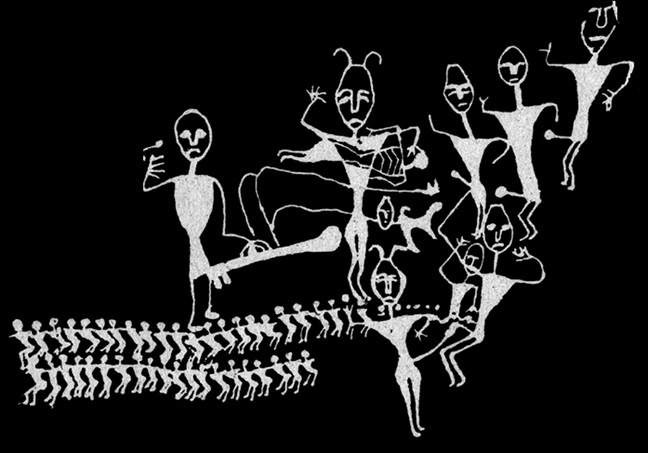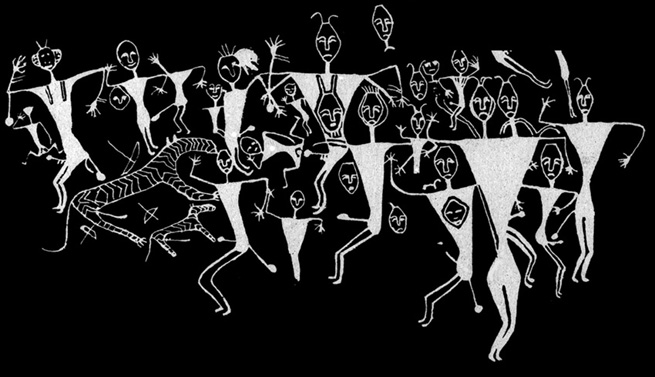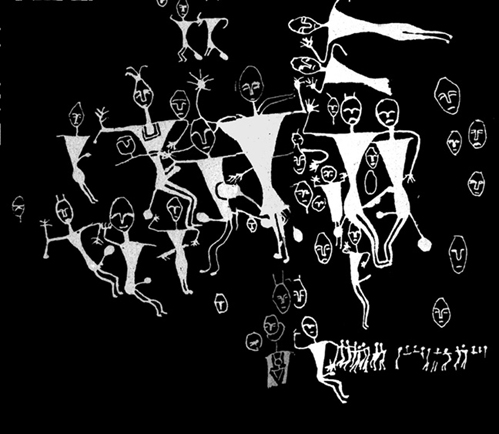It looks like you're using an Ad Blocker.
Please white-list or disable AboveTopSecret.com in your ad-blocking tool.
Thank you.
Some features of ATS will be disabled while you continue to use an ad-blocker.
23
share:
In the region of the Tien Shan mountains North of the Tarim basin are found petroglyphs that date to around 4,500 years old, a region that was then
inhabited by the Yuezhi, which translates as 'Moon Clan', an indo-European people associate with the Tocharians.
The interest for me in these carvings are the traditions that suggest a Mountain of the Gods or ancestral Patriarchs in the Zoroastrian Avesta and also in the the traditions of the Syriac Church, which both suggest a sacred mountain of the first time in conjunction with a 'Cave of Treasures'
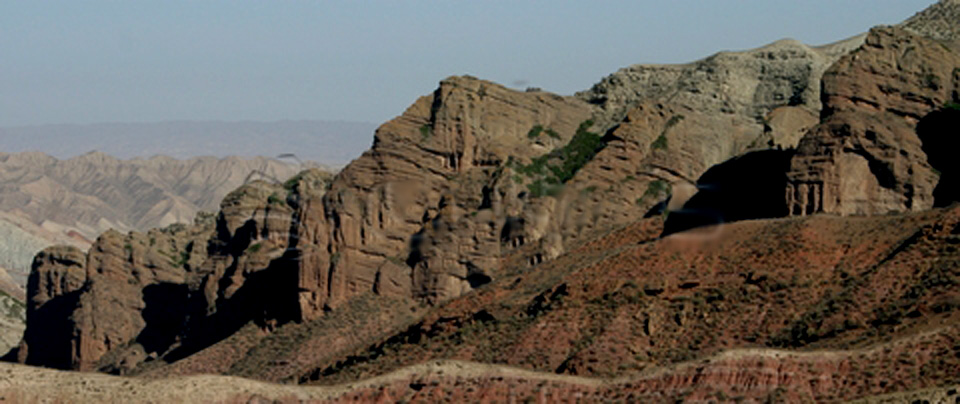
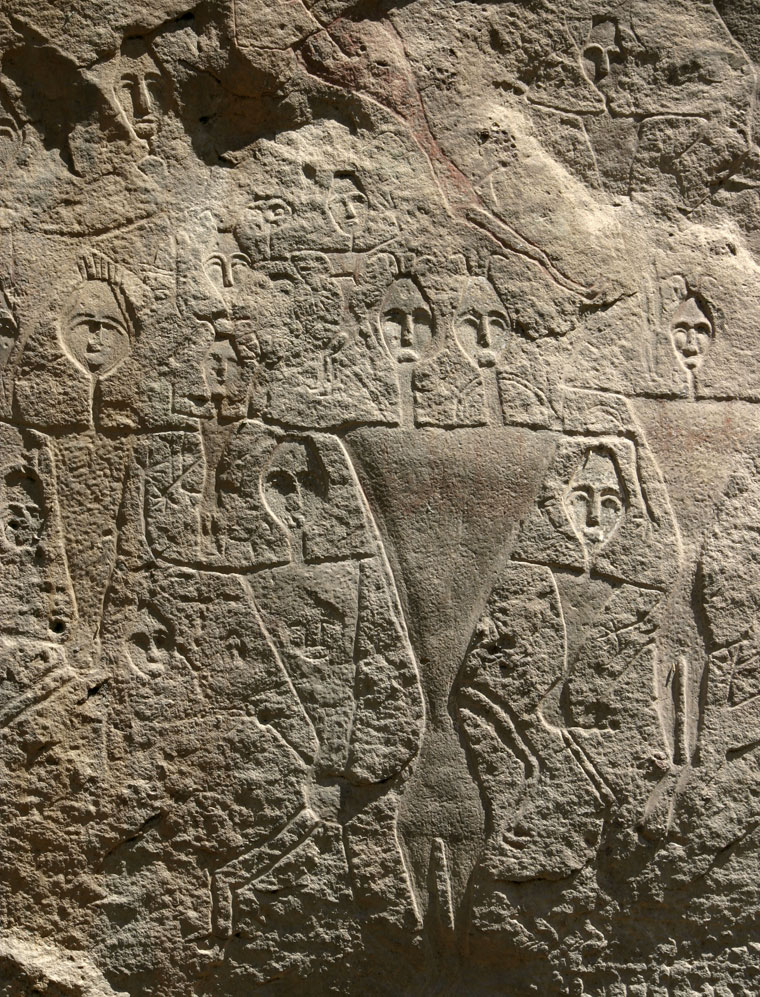
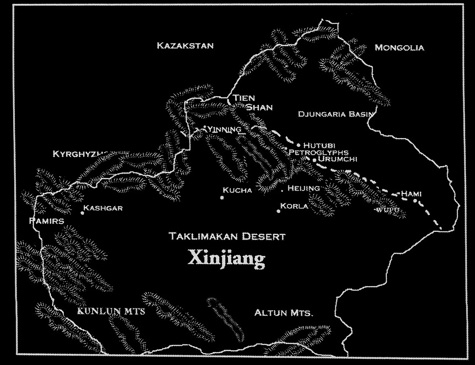
Those who look to interpret the petroglyphs inevitably come to the conclusion that pro-creation is involved, that little people seemingly emerge from the genitalia of the larger figures, who one might take as Gods or ancestral Patriarchs.
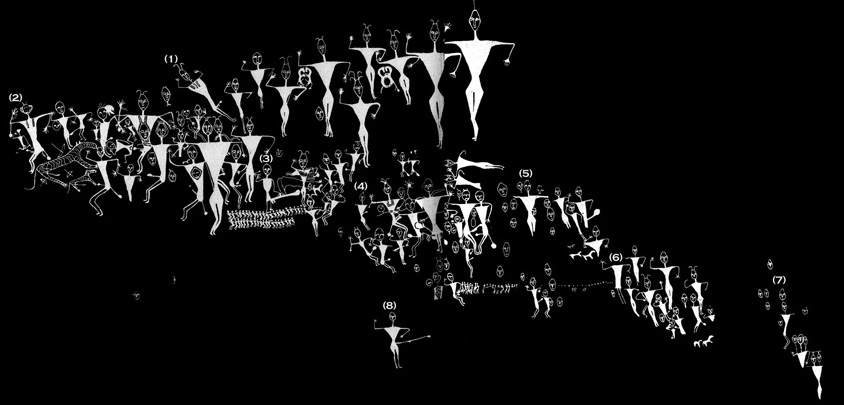
An aspect of the dating of these figures is comparison to similar found in Cucuteni culture, it can also be seen there the suggestion that there may have have been an astral association, the female figure perhaps representing Orion.
The traditions of the Avesta and Syriac church would posit this region as an actual place of origins for Eurasian people,the birthplace of Adam, rather than a region they have migrated into at an early date, whether that is the case or not they seem to have been in the region from an early date, thus giving rise to the traditions
Petroglyphs in the Tien Shan Mountains
The Kingdom of the Da Yuezhi
The interest for me in these carvings are the traditions that suggest a Mountain of the Gods or ancestral Patriarchs in the Zoroastrian Avesta and also in the the traditions of the Syriac Church, which both suggest a sacred mountain of the first time in conjunction with a 'Cave of Treasures'

Carved in bas-relief, the scene has been sheltered in a grotto at the base of a massive red-basalt outcropping in the Tien Shan, Xinjiang, partially bordered by the rugged Tien Shan Mountains and the Pamirs as well as hosting the extensive Taklimakan Desert, was culturally an extension of the Eurasian steppes. Mummies desiccated by the desert

The Tian Shan, also spelled Tien Shan, is a large system of mountain ranges located in Central Asia. The highest peak in the Tian Shan is Victory Peak
The Chinese name for Tian Shan may be derived from the Xiongnu language name Qilian which was described by Sima Qian in the Records of the Grand Historian as the homeland of the pre-Xiongnu peoples of the region, the Yuezhi
The name is formed from yuè (月) "moon" and shì (氏) "clan". According to the Kangxi Dictionary, it referred to a country beyond China's borders
The Yuezhi were an ancient Indo-European people often identified with the Tókharoi of Classical sources. They were originally settled in the arid grasslands of the eastern Tarim Basin area, in what is today Xinjiang and western Gansu, in China

As early as the mid-first millennium BCE the Yuezhi engaged in the jade trade, of which the major consumers were the rulers of agricultural China. During the Qin Dynasty period, the Yuezhi earned the support of Chinese rulers by providing them with large supplies of war horses.
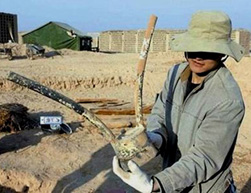
According to former USSR scholar Zuev, there was a queen among the large Yuezhi confederation who added to her possessions the lands of the on the headwaters of the Huanghe c. 3rd century BCE. According to Zuev, the Chinese chronicles began referring to the queen's tribe as the Great Yuezhi and to the Tochars as the Lesser Yuezhi
Evidence of the Indo-European Tocharian languages also has been found in the same geographical area, Although the first known epigraphic evidence dates to the 6th century CE, the degree of differentiation between Tocharian A and Tocharian B and the absence of Tocharian language remains beyond that area suggest that a common Tocharian language existed in the same area of Yuezhi settlement during the second half of the 1st millennium BCE.
Those who look to interpret the petroglyphs inevitably come to the conclusion that pro-creation is involved, that little people seemingly emerge from the genitalia of the larger figures, who one might take as Gods or ancestral Patriarchs.

Wang Bing-Hua of the Xinjiang Institute of Archaeology published the first information on the Kangjiashimenzi petroglyphs before 1992. He notes that the figures range in height from 10 cm. to the larger-than-life-size 2.5 m. The lowest carving is 2.5 m above the current ground level while the highest is 10 m .
All the images are portrayed with long, slender noses and well-defined superciliary ridges, indicating they represent a Caucasoid population. The female and male figures are identifiable by unique artistic conventions assigned to each sex. Most of the female wear truncated conical headdresses adorned with two projecting antennae that coil outward. Both sexes have triangularized bodies but stylization is unique depending upon the sex. A large inverted triangle forms the torso of each female while hips, thighs and calves are quite realistically modeled.
In the top register, ten very large images are portrayed. Nine females, each about two meters high, dance in a circle. A tenth personage on the left is partially reclining as if it were about to fall into a trance. This image is stylization as a bisexual personage. It wears a female headdress with antenna and a “bra” similar to the shamanic figure in scene although its torso and legs are stylized as the male and it is ithyphallic. Both arms, raised over its shoulders, have deviated from the normal dancing position. To complete the scene a single human head and two pairs of heraldic animals, probably goats—one pair markedly ithyphallic—are interspaced between the female dancers.
An aspect of the dating of these figures is comparison to similar found in Cucuteni culture, it can also be seen there the suggestion that there may have have been an astral association, the female figure perhaps representing Orion.
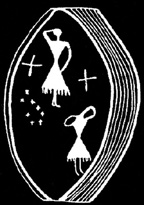
Even more remote from Xinjiang in time and space is the representation of a ritual dance painted on the fourth-third millennia Cucuteni-Tripolye pottery. This is an agricultural culture found in Romania, around Chisineau, Moldova and the Ukraine These female dances have hourglass figures composed of double triangles; they wear fringed dresses, and pose in the exact stance as those on the Kangjiashimenzi tableau
The traditions of the Avesta and Syriac church would posit this region as an actual place of origins for Eurasian people,the birthplace of Adam, rather than a region they have migrated into at an early date, whether that is the case or not they seem to have been in the region from an early date, thus giving rise to the traditions
...the people who emerge as Tocharians in Western sources are often equated with a branch of the Yuezhi of Chinese sources who were driven first from the Gansu borderlands by the Xiongnu, then further west by the Wusun, arriving at the Oxus, and going on to conquer Bactria and establish the Kushan empire.
Narain argues that once one accepts the equation Tocharian = Yuezhi, then one is forced to follow both the Chinese historical sources (which for him would propel the Yuezhi back to at least the 7th century BC) and the geographical reference of their first cited historical location (Gansu) to the conclusion that they had lived there ‘from times immemorial’. Narain infers that they had been there at least since the Qijia culture of c. 2000 BC and probably even earlier in the Yangshao culture of the Neolithic. This would render the Tocharians as virtually native to Gansu (and earlier than the putative spread of the Neolithic to Xinjiang) and Narain goes so far as to argue that the Indo-Europeans themselves originally dispersed from this area westwards
Petroglyphs in the Tien Shan Mountains
The Kingdom of the Da Yuezhi
reply to post by Kantzveldt
Wow! Awesome presentation, Kantz. Thanks for posting this. I think if I had it all to do over again (or, perhaps, I am recalling fragments of a past lifetime), I would be an archaeologist and anthropologist (for now I just enjoy digging in soil and finding things; and studying as a lay person). I'm still in my 50s, and people have certainly taken on "second careers" as such. It's actually on my written "bucket list" to participate in an archaeological dig someday.
Doubt that I'd get to go abroad, though....there are ancient relics in the area right around my home, however, on the south banks of the Missouri river.
The video was fascinating - especially toward the end, when they climb up to that high cave and find the paintings of buddha-figures with haloes, and kneeling before them are western-looking people with red and blonde hair, beards, etc.
This seems to me to indicate even more possibility that the man called Jesus did, in fact, travel that silk road and may well have studied with those Buddhist holy men. It was all at about the same time period as Jesus is recorded as living.
Wow.
Thanks. Amazing stuff.
S/F!!!
Wow! Awesome presentation, Kantz. Thanks for posting this. I think if I had it all to do over again (or, perhaps, I am recalling fragments of a past lifetime), I would be an archaeologist and anthropologist (for now I just enjoy digging in soil and finding things; and studying as a lay person). I'm still in my 50s, and people have certainly taken on "second careers" as such. It's actually on my written "bucket list" to participate in an archaeological dig someday.
Doubt that I'd get to go abroad, though....there are ancient relics in the area right around my home, however, on the south banks of the Missouri river.
The video was fascinating - especially toward the end, when they climb up to that high cave and find the paintings of buddha-figures with haloes, and kneeling before them are western-looking people with red and blonde hair, beards, etc.
This seems to me to indicate even more possibility that the man called Jesus did, in fact, travel that silk road and may well have studied with those Buddhist holy men. It was all at about the same time period as Jesus is recorded as living.
Wow.
Thanks. Amazing stuff.
S/F!!!
edit on 12/31/13 by wildtimes because: (no reason given)
(post by EnigmaAgent removed for a serious terms and conditions violation)
reply to post by Kantzveldt
Thanks for posting this. It was very nicely written and presented. I've never looked into these people or their works before. Very informative.
S & F
Thanks for posting this. It was very nicely written and presented. I've never looked into these people or their works before. Very informative.
S & F
Very interesting! Asia has such a rich history.....I wish I could experience it first hand!
I am happy to do it vicariously through threads like this, tho....
S&F
I am happy to do it vicariously through threads like this, tho....
S&F
reply to post by wildtimes
There was certainly interest in that region by the Syrian Church, who as i mentioned tended to locate the tradition of Adam and the Patriarchs up to the time of Noah there, and in the 6th century they established Christianity there for a couple of centuries which merged with the Taoist tradition
Lost Christianity of X'ian
The tradition of the Mountain of the ancestors i'm looking at with regards to the seeming interest also in the Magi with the region, after Bybyots thread here
First Book of Adam and Eve
reply to post by SLAYER69
Not so easy to get any sort of images of the place it being in China, but i expect there is much more to come from the region.
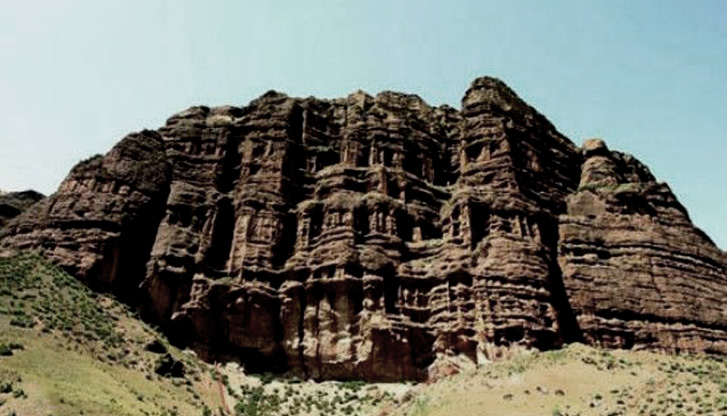
reply to post by EnigmaAgent
Well they certainly seemed to know how to party...
There was certainly interest in that region by the Syrian Church, who as i mentioned tended to locate the tradition of Adam and the Patriarchs up to the time of Noah there, and in the 6th century they established Christianity there for a couple of centuries which merged with the Taoist tradition
Lost Christianity of X'ian
The tradition of the Mountain of the ancestors i'm looking at with regards to the seeming interest also in the Magi with the region, after Bybyots thread here
On the third day, God planted the garden in the east of the earth, on the border of the world eastward,beyond which, towards the sun−rising, one finds nothing but water, that encompasses the whole world, and reaches to the borders of heaven.
2 And to the north of the garden there is a sea of water, clear and pure to the taste, unlike anything else; so that, through the clearness thereof, one may look into the depths of the earth.
Again, also, because God is merciful and of great pity, and governs all things in a way that He alone knows −− He made our father Adam live in the western border of the garden, because on that side the earth is very broad.
First Book of Adam and Eve
Now Adam and Eve were virgins, and Adam wished to know Eve his wife. And Adam took from the skirts of the mountain of Paradise, gold, and myrrh, and frankincense, and he placed them in the cave, and he blessed the cave, and consecrated it that it might be the house of prayer for himself and his sons
reply to post by SLAYER69
Not so easy to get any sort of images of the place it being in China, but i expect there is much more to come from the region.

reply to post by EnigmaAgent
Well they certainly seemed to know how to party...
edit on Kam1231364vAmerica/ChicagoTuesday3131 by Kantzveldt because: (no reason
given)
Kantzveldt
reply to post by SLAYER69
Not so easy to get any sort of images of the place it being in China, but i expect there is much more to come from the region.
Excellent point.
Agreed, which is exactly why my contribution to this forum regarding the region has been few and far between. I appreciate the feedback and again nicely done.
reply to post by Kantzveldt
Very well done. Thanks. ...When I look at the pictures I see matriarchy though.
F&S
Very well done. Thanks. ...When I look at the pictures I see matriarchy though.
F&S
DAYS OF FUTURE PAST...
A couple of things strike me as interesting. First is the two headedness found in several of the petroglyphs. Was it a form of polycephaly that survived into adulthood much like Abigal and Brittany?
Second, it is obvious that the triangular upper torso is meant to depict female forms but in a few there is also the phallic representation. Was this a hermaphrodite deity or priest(ess)?
I am often left to wonder about the Bible's Matthew 24:37-43 regarding the return of the son of man being As in the Days of Noah...
As always Kantz another corner of history I have never come across depicting things and peoples I have never heard of. Oh to know the shattered history of humanity and why we are amnesiacs.
A couple of things strike me as interesting. First is the two headedness found in several of the petroglyphs. Was it a form of polycephaly that survived into adulthood much like Abigal and Brittany?
Second, it is obvious that the triangular upper torso is meant to depict female forms but in a few there is also the phallic representation. Was this a hermaphrodite deity or priest(ess)?
I am often left to wonder about the Bible's Matthew 24:37-43 regarding the return of the son of man being As in the Days of Noah...
As always Kantz another corner of history I have never come across depicting things and peoples I have never heard of. Oh to know the shattered history of humanity and why we are amnesiacs.
edit on 31-12-2013 by abeverage because: of amnesia...
reply to post by abeverage
Double headed figures are quite common in ancient figurines and could have been seen as male and female cojoined in a spiritual and physical sense, there is much confusion of the two in the petroglyphs, this is a Syrian-Hittite example;

Of course there is the tradition of the Baphomet, which at least in some interpretations has male and female faces, there is the Hermetic basis for this also.
As it was at the begining so shall it be at the end...with regards to Noah
Double headed figures are quite common in ancient figurines and could have been seen as male and female cojoined in a spiritual and physical sense, there is much confusion of the two in the petroglyphs, this is a Syrian-Hittite example;

Of course there is the tradition of the Baphomet, which at least in some interpretations has male and female faces, there is the Hermetic basis for this also.
As it was at the begining so shall it be at the end...with regards to Noah
edit on Kam1310vAmerica/ChicagoWednesday0131 by Kantzveldt because: (no reason given)
Great thread... a good few years back i watched a documentary on mummies from the same region...one of the female mummies had what looked like a
witches hat,i cant remember the name of it to save my life?
I look forward to the Ancient Aliens episode that includes all of this information
The first image with the Antennae-Man is an obvious "Alien Experimentation" memory.
The first image with the Antennae-Man is an obvious "Alien Experimentation" memory.
reply to post by jammer2012
It featured in the documentary in the op, but this is the one you're thinking of, the proper witches hat;
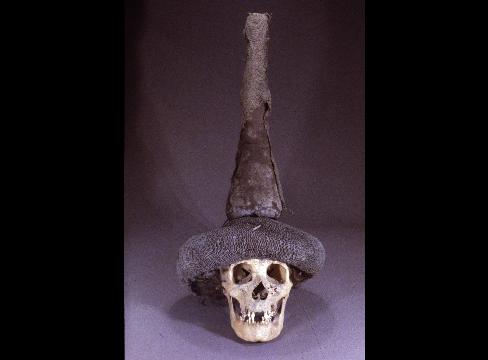
There is also some suggestion that wizards hats with moons and stars had a basis in reality after the gold hats found in Germany dating to around 1,000 Bc, with the phrases of the moon around it.
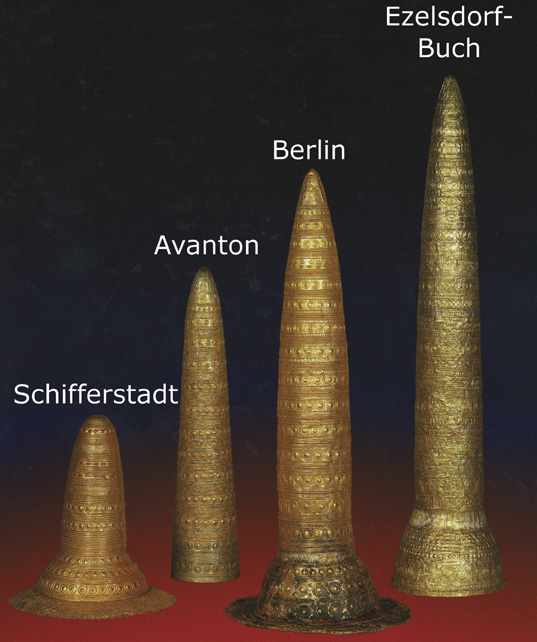
Sun and Moon calandar hats
Looks like a space programme but only involving hats not rockets.
It featured in the documentary in the op, but this is the one you're thinking of, the proper witches hat;

There is also some suggestion that wizards hats with moons and stars had a basis in reality after the gold hats found in Germany dating to around 1,000 Bc, with the phrases of the moon around it.

Sun and Moon calandar hats
Looks like a space programme but only involving hats not rockets.
reply to post by Kantzveldt
Nice thread. Love reading about this stuff.
My first reaction to the petroglyphs would be starmap. They are the moon clan after all...
Maybe the double headed dude represents Gemini? The animal Leo? The curvature of the design might suggest they were tracking a cosmic body (planet, asteroid, whatever) through the stars. Each body represents a deity or personality, makes it easy to remember. The long line of bodies at the bottom left might be years or generations or just represent how many people were involved... All speculation, I know... I may just look into this a little bit more... I may just leave it hanging...
Nice thread. Love reading about this stuff.
My first reaction to the petroglyphs would be starmap. They are the moon clan after all...
Maybe the double headed dude represents Gemini? The animal Leo? The curvature of the design might suggest they were tracking a cosmic body (planet, asteroid, whatever) through the stars. Each body represents a deity or personality, makes it easy to remember. The long line of bodies at the bottom left might be years or generations or just represent how many people were involved... All speculation, I know... I may just look into this a little bit more... I may just leave it hanging...
reply to post by Kantzveldt
what is interesting is the sexual representation. On those black&whites clearly are visible strange "penises" and "tails"...or at least...they look like it to me. No mention of those features in the info description.
what is interesting is the sexual representation. On those black&whites clearly are visible strange "penises" and "tails"...or at least...they look like it to me. No mention of those features in the info description.
reply to post by Kantzveldt
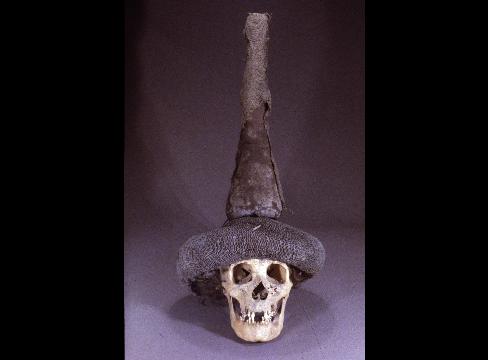
There it is...you found it and it is as amazing as the first time i saw it. This shows that stories for the past have some reality that these people used and wore these clothing is ritual and ceremonial purpose. Who would have ever thought that a real witches hat would pop up from thousand of years ago, after been popularized in last 100 years or so. There are so many things yet to be discovered.Hopefully this part of China will be accessible for all ,we all know how China can be and were lucky that they didn't behead the church and man mummy.

There it is...you found it and it is as amazing as the first time i saw it. This shows that stories for the past have some reality that these people used and wore these clothing is ritual and ceremonial purpose. Who would have ever thought that a real witches hat would pop up from thousand of years ago, after been popularized in last 100 years or so. There are so many things yet to be discovered.Hopefully this part of China will be accessible for all ,we all know how China can be and were lucky that they didn't behead the church and man mummy.
reply to post by Kantzveldt
Danu, Danann, Dana = Moon Goddess
Tuatha de Danaan = Tribe/Clan/children of the Moon Goddess
"It is God who suffered them, though He restrained them
they landed with horror, with lofty deed,
in their cloud of mighty combat of spectres,
upon a mountain of Conmaicne of Connacht.
Without distinction to descerning Ireland,
Without ships, a ruthless course
the truth was not known beneath the sky of stars,
whether they were of heaven or of earth."
Danu, Danann, Dana = Moon Goddess
Tuatha de Danaan = Tribe/Clan/children of the Moon Goddess
"It is God who suffered them, though He restrained them
they landed with horror, with lofty deed,
in their cloud of mighty combat of spectres,
upon a mountain of Conmaicne of Connacht.
Without distinction to descerning Ireland,
Without ships, a ruthless course
the truth was not known beneath the sky of stars,
whether they were of heaven or of earth."
edit on 2-1-2014 by LUXUS because: (no reason given)
new topics
-
Happy Thanksgiving to ATS
General Chit Chat: 47 minutes ago -
Simple Thanksgiving
Food and Cooking: 7 hours ago -
Trump could make a peaceful American Revolution
US Political Madness: 10 hours ago -
Trump Presidential Transition Team will not use GSA or Government entities to come to DC
US Political Madness: 11 hours ago -
Mind Blowing Cave under someones land
Fragile Earth: 11 hours ago
top topics
-
V.P. Kamala Harris releases a video and nobody understands why
US Political Madness: 15 hours ago, 16 flags -
Mind Blowing Cave under someones land
Fragile Earth: 11 hours ago, 16 flags -
The Party of Peace - Trump Cabinet Picks Targeted with Death Threats
US Political Madness: 12 hours ago, 15 flags -
Trump could make a peaceful American Revolution
US Political Madness: 10 hours ago, 14 flags -
Trump Presidential Transition Team will not use GSA or Government entities to come to DC
US Political Madness: 11 hours ago, 13 flags -
Simple Thanksgiving
Food and Cooking: 7 hours ago, 13 flags -
Happy Thanksgiving to ATS
General Chit Chat: 47 minutes ago, 2 flags
active topics
-
Mind Blowing Cave under someones land
Fragile Earth • 17 • : Owlwatcher -
Happy Thanksgiving to ATS
General Chit Chat • 2 • : GENERAL EYES -
Trump Presidential Transition Team will not use GSA or Government entities to come to DC
US Political Madness • 12 • : 777Vader -
Simple Thanksgiving
Food and Cooking • 26 • : Station27 -
The Party of Peace - Trump Cabinet Picks Targeted with Death Threats
US Political Madness • 27 • : DBCowboy -
President-Elect DONALD TRUMP's 2nd-Term Administration Takes Shape.
Political Ideology • 256 • : WeMustCare -
-@TH3WH17ERABB17- -Q- ---TIME TO SHOW THE WORLD--- -Part- --44--
Dissecting Disinformation • 3389 • : Crazierfox -
I thought Trump was the existential threat?
World War Three • 113 • : WeMustCare -
Mood Music Part VI
Music • 3719 • : MRTrismegistus -
Tunnels of Terror: The Cryptid Connection The Why Files
Cryptozoology • 5 • : TheMisguidedAngel
23

